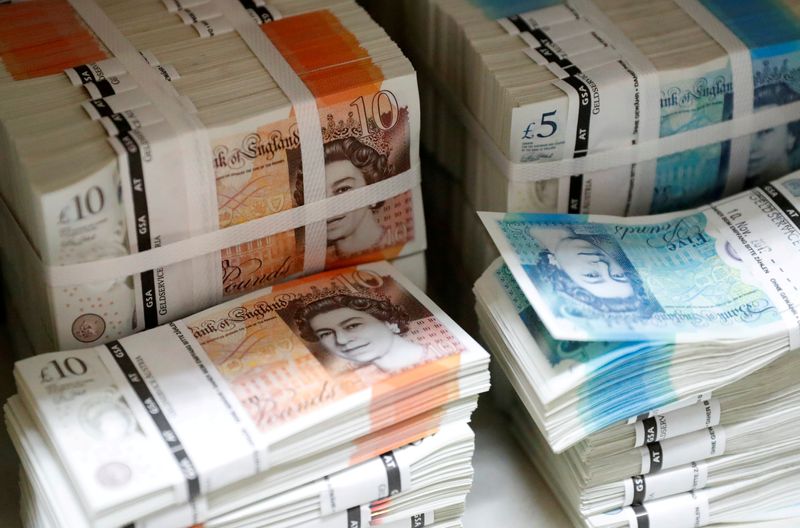By Anushka Trivedi and Sujata Rao
LONDON (Reuters) -Sterling slipped off one-week highs versus the dollar on Friday, pressured by stock market declines and signs of economic slowdown which some analysts felt may force the Bank of England to tone down its hawkishness in coming weeks.
The currency earlier reached a high of $1.3880 but later slipped back to trade flat on the day at $1.38475. Against the euro, sterling traded at a three-week high of 85.25 pence.
Its early gains -- as much as 0.4% higher on the day versus the greenback -- came despite data showing the British economy expanded by just 0.1% in July due to self-isolation rules.
Early signs in August have pointed to a surge in consumer spending, meaning the BoE may not be deterred from raising borrowing costs
A Reuters poll indicated this would happen by end-2022 or even earlier while Governor Andrew Bailey said on Wednesday that half the bank's board members deemed conditions were right to start considering rate rises.
"The comments from Governor Bailey and the Reuters survey showing the consensus is for a BoE hike by the end of next year was a counterbalance to the data and were sterling positive," Rabobank strategist Jane Foley said.
"But now we will see more focus on whether the pace of this recovery is slowing and whether the BoE may reel back the hawkish tone we saw in August."
She noted that data on jobs, inflation and retail sales were due next week, crucial inputs for the BOE's Sept. 23 meeting, especially as the previous month's figures had showed weaker price and retail sales growth.
Tax increases will also bite from next year, analysts say. That alongside the weak data pushed the domestically focused FTSE 250 equity index into its worst weekly performance since mid-July. It fell 0.3% on the day.
"There is a possibility the BoE sounds more cautious in September and that's something sterling investors will be trying to weigh up," Foley added.
Currently money markets see a 53% probability of a 15-basis-point hike in February, while the Federal Reserve is forecast not to raise rates until at least 2023.

Those expectations alongside the economic rebound fostered by a blistering vaccination campaign made sterling among the best performing currencies this year.
However, for the pound to break above $1.40, a level last reached in June, economic data needs to hold up over the next two months and BoE hawkishness to build further, MUFG strategist Lee Hardman said.